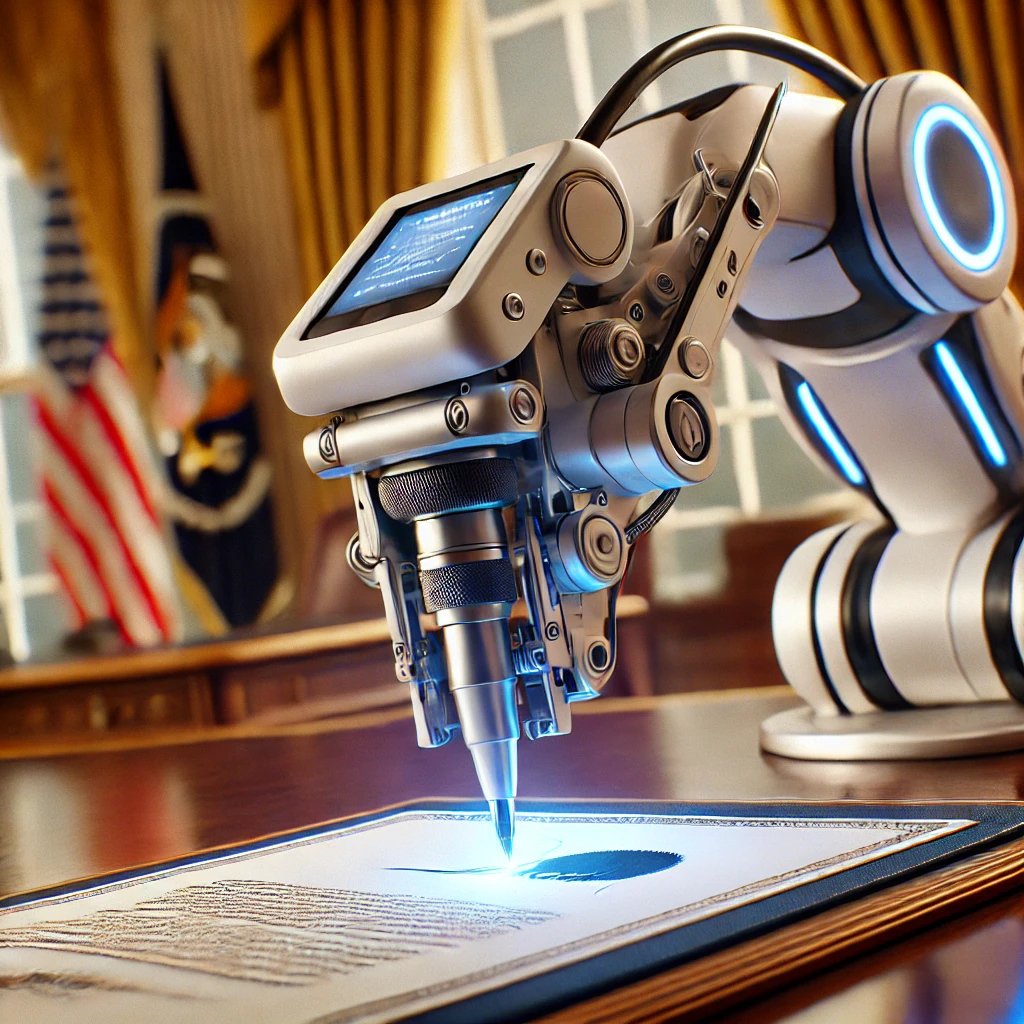Physical Address
304 North Cardinal St.
Dorchester Center, MA 02124
Physical Address
304 North Cardinal St.
Dorchester Center, MA 02124

Discover what an autopen is, how it works, and its legal implications in government and business. Learn about autopen signature authentication, autopen vs real signature, historical presidential use, and the controversy over Biden's autopen-signed pardons. Understand how autopen machines compare to e-signatures and their role in official document verification.
An autopen is a mechanical device that automatically replicates a person’s handwritten signature without requiring their direct involvement. Used for decades by government officials, public figures, and businesses, the autopen is particularly valuable for signing high volumes of documents efficiently. However, its use has sparked debates about authenticity, legality, and political implications, particularly when used in official government settings.
The recent controversy surrounding President Joe Biden’s use of the autopen—and former President Donald Trump’s objections—has reignited discussions about its role in U.S. governance. This article explores the history, mechanics, legal standing, and current debate over autopen usage, including its implications in Biden’s late-term pardons and broader presidential authority.
An autopen is a device designed to replicate a person’s signature with precision using a programmed template and an attached pen. Unlike digital signatures or stamped signatures, autopen-generated signatures are created physically with ink, making them appear handwritten. However, because they produce near-identical copies, they can often be distinguished from genuine handwritten signatures through detailed examination.
This automation is useful for high-ranking officials who must sign legislation, proclamations, letters, and certificates in large volumes.
The autopen is commonly used in politics, business, and entertainment, including:
The autopen has been used by multiple U.S. presidents, dating back to the mid-20th century:
The legality of autopen signatures in government has been affirmed in multiple instances:
While autopen signatures are legally accepted, political debates over their perceived authenticity and ethical use persist.
In early 2025, Donald Trump accused Joe Biden of using an autopen to sign official presidential pardons, particularly those issued on January 20, 2025, Biden’s final day in office. These pardons included pre-emptive clemency for Hunter Biden, Dr. Anthony Fauci, General Mark Milley, and members of the House January 6 committee—all individuals Trump has criticized as political adversaries.
Trump claimed on Truth Social that these pardons are “VOID, VACANT, AND OF NO FURTHER FORCE OR EFFECT” because Biden allegedly did not personally sign them. He suggested this undermined their legitimacy and signaled potential investigations into the recipients.
The dispute arose from a report by the Heritage Foundation’s Oversight Project, which claimed that Biden used an autopen for nearly all official documents during his presidency, except for his 2024 re-election withdrawal announcement. Critics argued this implied a lack of direct presidential control over key decisions.
Trump capitalized on the controversy by alleging that Biden’s use of an autopen disrespected the presidency and could invalidate official documents. However, legal experts countered that autopen signatures, if authorized by the president, remain legally binding.
There is no constitutional requirement that a president must personally sign documents by hand. Historical precedent and legal interpretations suggest:
Thus, Trump’s claim that Biden’s pardons are invalid due to autopen use lacks constitutional and legal grounding.
While autopen signatures closely mimic handwritten ones, they often show specific traits:
Forensic document examiners use these techniques to differentiate authentic handwriting from autopen signatures.
With advancements in digital signatures and blockchain verification, the autopen is no longer the sole solution for automated signatures. Government agencies and corporations are transitioning to secure e-signature platforms that provide:
However, autopens remain relevant for ceremonial and official signings where physical ink signatures are required.
Given recent controversies, there may be future policy changes regarding:
The autopen has been a standard tool for government efficiency for decades, yet its use remains politically controversial. While Trump’s challenge to Biden’s autopen-signed pardons has fueled partisan debate, legal precedent strongly supports their validity.
Ultimately, the controversy is less about legality and more about political optics, reflecting broader concerns about presidential authority, legitimacy, and governance in modern politics.
As technology continues to evolve, the autopen debate may shift toward broader questions about digital authentication and executive transparency in the years ahead.